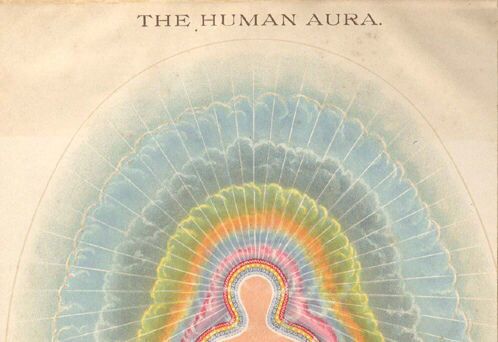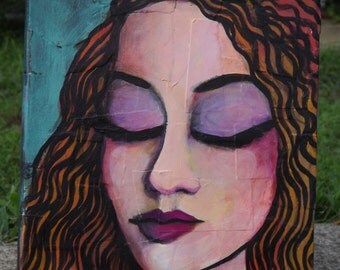Hello from Chennai, Tamil Nadu, India! I have been in this country for about a month and a half on a Study Abroad program through Lewis & Clark College. I am traveling with a group of 18 other students, as well as two awesome program leaders. I haven't posted on Media Mindfully in quite some time, but have been inspired since arriving in India to start blogging about my experiences regarding technology and media use in another culture.
Before coming to India, I spent a lot of time pondering what my technology use was going to look like. After taking interpersonal media, I left off on a very optimistic note about the role social media and other communication tools play in my life. I am grateful for all of my the connections sustained and created online, but I also acknowledge that different media have different affordances that may or may not be helpful for my wellbeing while traveling. I'd like to share with anyone interested what my media "game plan" was, and how it has transformed throughout my travels. I hope that in hearing about my experiences, others may be interested in reevaluating their media use before traveling, so as to be mindful about carrying out whatever their intentions behind the trip are.
The first decision I had to make was what physical devices I would carry on my journey. Because I am switching locations every few weeks, I tried my best to pack light-- everything in a 75 liter backpack. With this in mind, I didn't want to bring much, or anything heavy. Additionally, our trip leaders warned us to "not bring anything we couldn't replace if stolen or damaged". I am on a tight budget as a student, so the idea of losing my phone or laptop sounded like a nightmare. So I didn't bring either.
Instead, I bought an iPad mini and a keyboard case, which was surprisingly affordable and very lightweight. I have been using this (solely with wifi) for writing papers, researching, emailing, and some social media use. In addition, my dear friend Rosemary let me take an old, cracked iPhone 4 of hers. There is no calling or messaging on the phone because it isn't set up with a network, but I take it out with me to snap photos, and it can also connect to wifi to share those photos and allows for other communication via Internet. I basically wanted to use this phone because it is already damaged and I don't have to worry about it.
The second decision I had to make was what platforms I would use on those devices to communicate with others. Something important I factored into my decision making progress was that I wanted to be able to share snippets of my experiences with friends and family, but I didn't want my communication with them to take away from being fully present in India. I ended up working with these platforms:
Facebook
I made an announcement on my Facebook page the day before I went to India, providing my email and Instagram account, because I wouldn't be using my Facebook account much. Well, that was the plan. I originally wanted to avoid Facebook, because I didn't want to constantly be updated with photos, posts, and invites that were connected to Santa Cruz and Portland. However, after being in India for a month, I made friends with many locals along my travels and wanted to be able to stay connected with them, so I would pop on every once in a while to add new people, and inevitably check up on my notifications. For the most part though, it has felt good to take a break from posting and checking up on my Facebook.
Facebook Messenger
When Facebook Messenger first came out as a separate app, I though it was weird and annoying to have it be removed from the rest of Facebook. Now I love it! Facebook messaging has become my main means of communication (in conjunction with email). It is nice that it is separate from the Facebook app, because I have the affordance of communicating with people I want to without having to log onto my Facebook page and see everyone's updates from home. It has allowed me to fulfill my intention of not focusing on information that isn't relevant to my present experience.
Instagram
Instagram has been my favorite social media app for some time now, and this has remained true while in India. Just as I didn't want to be overwhelmed with information from back at home on Facebook, I also felt like I needed to disconnect from people in this way on Instagram. I made a new account (@ajnainindia), and have been very selective about who I follow-- mostly only people that are on the study abroad program with me. Also, with my regular Instagram, I have always been particular about only posting one picture at a time, but now with a fresh start, I feel as if I have the space to post endlessly. I think this is my own peculiarity.
Another benefit to creating a new account was that I felt comfortable making this new account public, which allows me to contribute to our group hashtag (#LCindia2015) which posts directly to our group Wordpress site. With a public profile, my photos also show up when people search different locations that I have added to my photos. For example, a lot of random people liked the photos I posted of my mandala painting at the Beatles Ashram, because I added the geotag for that location (see photo below). I also was able to find a picture that someone else had posted of my art through the geotag! This feature can also cause some tension though. I will write another post soon about the contention I had with someone who found a picture of mine through a geotag at a Delhi Metro stop, and put the link here.
Email
I dig the email app on iProducts. I love that all of my various accounts can filter into one Inbox! I have continued to use my email to receive various updates from school, as well as from our program trip leaders. I have also used email socially to keep in contact with friends and family. It is so much fun. Receiving emails at home (especially while in school) often can be overwhelming and tedious to sort through and respond to. But here, getting emails feels special, like receiving a postcard or handwritten letter. Sharing photos and stories in this way has been nice, especially because most people I am communicating with are 12 hours behind, real-time talk is challenging.
Wordpress
Part of my academic assignment in India is journaling about my experiences everyday (See photo below of my journaling-station on the train To Haridwar from Delhi). I have been doing this in a physical journal, but for each city I am in, I transfer an entry onto our group's Wordpress site. You can read the posts I've made so far here. I have also been updating my progress on my research project about cows on Wordpress, which you can read about here. Wordpress can be a bit hard to work with, but I have used it for academic work before, with my multisite Metanoia (currently under renovation). It feels good to have a creative, digital outlet for my academic work.
Overall, my media usage has felt very different being in India, both intentionally and unintentionally. Not accessing posts from people back home often has been a choice that I am very happy with so far. It feels rather good to be primarily receiving information that is meant for me directly, through email and messaging. The wifi here has been very spotty where we are living though, so there are times when I don't have much access to communicate with people back home. Also, when I am out and about on the streets, I can't communicate with anyone, use GPS to find destinations, or quickly google a place to eat or answer to a question that arises. Having more time "disconnected" has made me truly appreciate what ease and convenience technology normally brings into my life, but has also challenged me to engage more fully where I am. Stay tuned for more updates about my experiences while in India, and if you haven't already, checkout my Instagram @ajnainindia for photos of my travels. If you have any questions or comments, feel free to email me at ajnagabriella@gmail.com too.







































